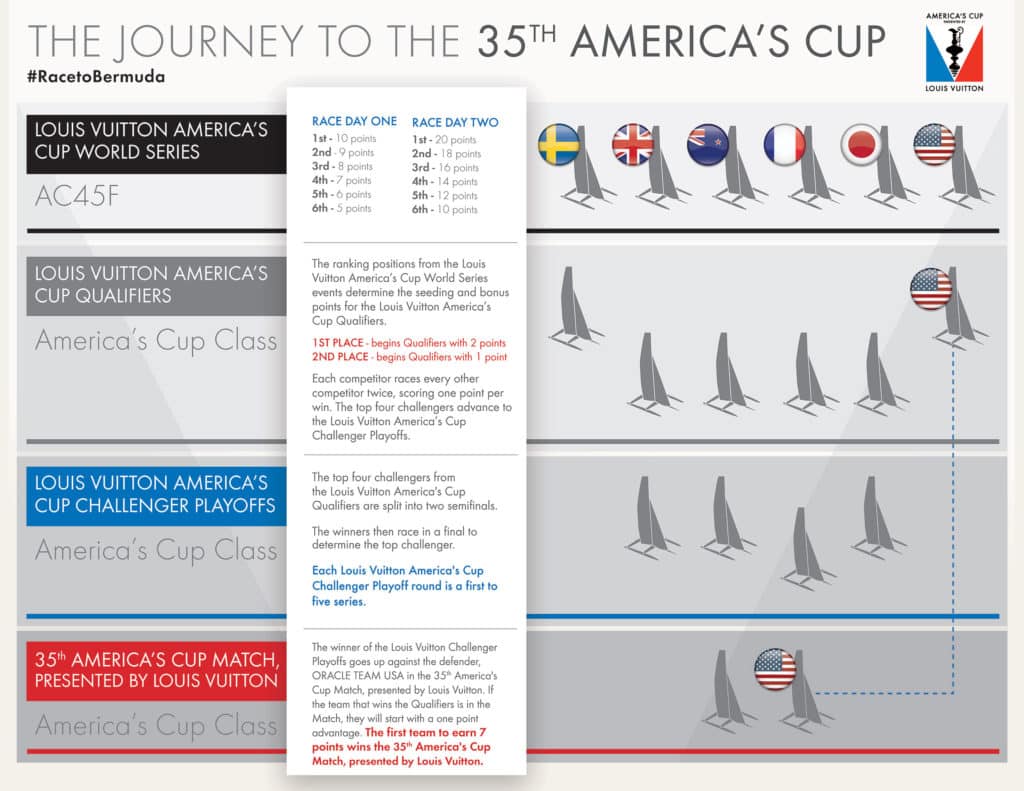
With the schedule for the 35th America’s Cup now out, we can turn our attention to the boats that will be racing in Bermuda 2017, look at the boats being campaigned in the Louis Vuitton America’s Cup World Series, and examine the differences between the America’s Cup Class (ACC) boats that will race in May and June 2017, and those being tested by the teams now between the rounds of the Louis Vuitton America’s Cup World Series.
Basically there are three types of boats being used in the 35th America’s Cup.
The AC45F (F for Foiling) is a one-design, foiling, wing-sailed catamaran that is raced in the Louis Vuitton America’s Cup World Series. Compared to an ACC boat the AC45F is relatively simple and as a one design yacht, all of the boats are identical.
For 2017, each team must design and build it’s own America’s Cup Class (ACC) boat. These boats are 15-metres long (nearly 50-feet) and are built to a design rule, but that rule allows designers and engineers to express their creativity in their designs. All racing in 2017, from the Louis Vuitton America’s Cup Qualifiers to the America’s Cup Match, presented by Louis Vuitton, will be match racing in ACC boats.
The AC45S (or AC45T as some teams call them) is the bridge between the AC45F and the ACC boats. The teams are using these to test ideas, validate assumptions, and practice racing in a boat that closely approximates the ACC boats. The AC45S boats will never engage in ‘official’ racing and some teams have one of these boats while some have built more for testing and training purposes. The hulls for the AC45S boats must be identical to AC45F hull lengths (45ft), but otherwise, as these boats will never race, teams have a lot of flexibility in the systems they can use on board.
In basic terms, that’s it. From AC45F to AC45S to ACC, the development is clear, but what is yet to be seen is just how fast the ACC boats will be.









